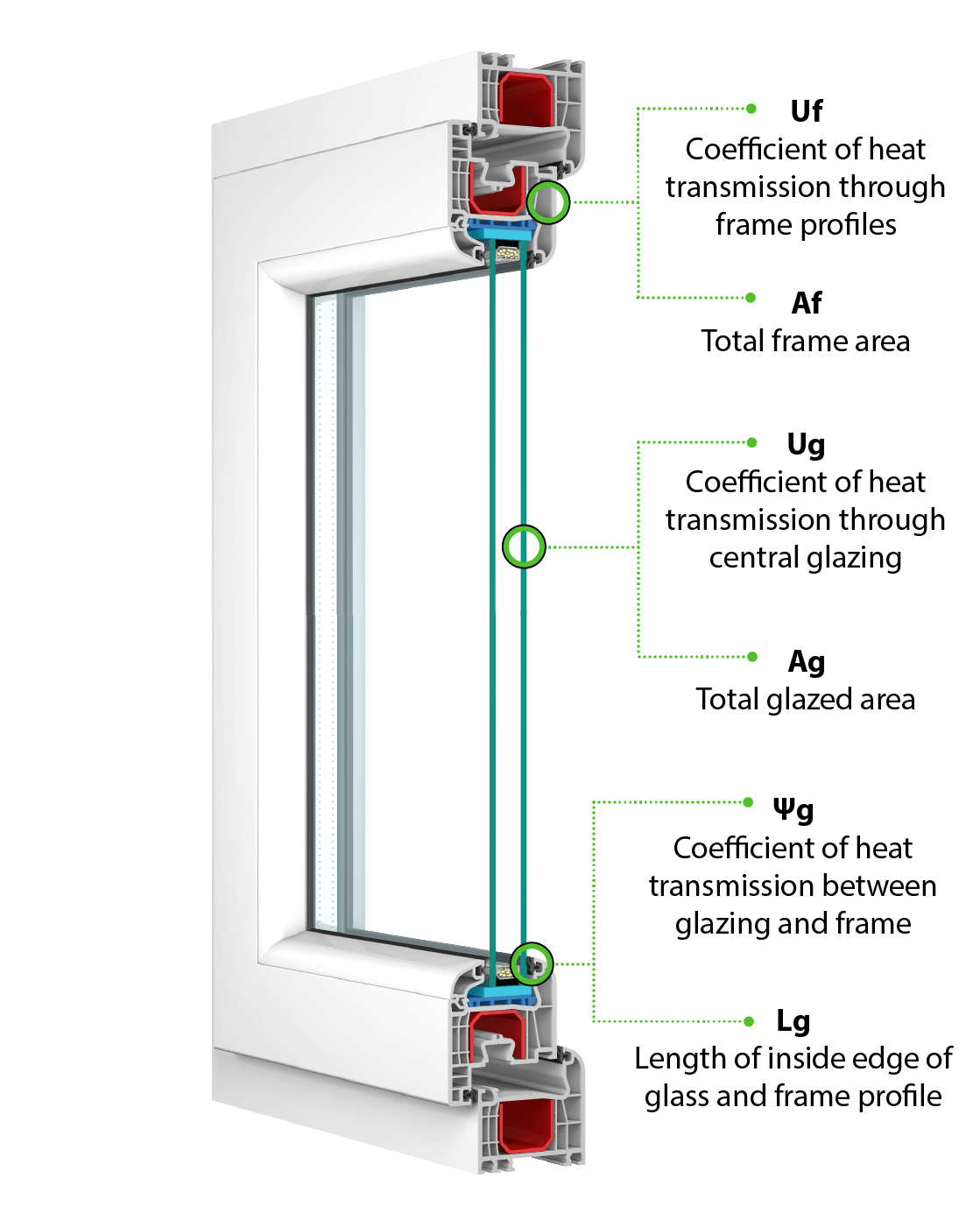The U-value is a measure of heat transmission through a material, and window performance is measured in this way. The lower the U-value, the greater a window’s resistance to heat flow and the better the insulating properties.
In order to get an accurate u-value of a window, the various parts of the window needs to be distinguished and tested. This structure is separated into two separate thermal insulation features, one being non-transparent (window frames and sashes) and the other transparent (glazing unit). This subdivision determines the u-value (coefficient of heat transmission) of the window. The formula below is used for technical approvals granted by the Building Research Institute (ITB) for systems of windows doors:

Legend:
Ug – Coefficient of heat transmission through the central part of window glazing, [W/(m2K)],
Ag – Glazed area, [m2],
Uf – Coefficient of heat transmission through structural profiles or joints of frame profiles [W/(m2K)],
Af – Area of the above components, [m2],
Yg – Linear coefficient of heat transmission for a thermal bridge that is formed at the contact border between glazing and frame profiles, [W/(mK)],
L – length of a linear thermal bridge, equal to the length of contact border between glazing and frame, [m].

Usually the glass will be the lowest and best performing of these values (Uw).
And the Aluminium Frame will usually be the highest of these values (worst performing) because metal is a good conductor (Uf).

Window Testing- Australia and Europe comparison
All our windows and doors are tested and meet Australian Standards and rated to Australian weather conditions. Our products are also tested in Europe and many of our results displayed on our website are from European tests.
You may have noticed some statements sayings (according to the PN-EN674*) The explanation is below.
*PN: refers to the location of testing standards. PN is Poland
*EN 674: refers to the type of test that has occurred. EN 674 is the determination of thermal transmittance (u-value) with the guarded hot plate method.
The determination of u-values does however, differ from one testing location to another. Which does mean that the results will vary from Europe and Australia, but it is important to understand how they are different.
Both Australia and Europe use the metric system which makes comparing results easier than countries like America, which use the imperial system.
In Australia, a window test size is 600mm wide x 1500mm high. Resulting in a testing area of 0.9m2. In Europe however, the window test size is larger at 1230mm wide x 1480mm high. Resulting in 1.48m2 testing area. Therefore, in Europe there is a much larger surface area, and therefore has more glass that is tested. As previously mentioned, the u-value is calculated from both the glass and frame.
As an example, if a double glazed window with uPVC frames is tested in Australia, it could give a great result. However, if tested in Europe the result will most likely be less impressive. The reason for this is because of the proportion between glass and frame. In Australia, with a smaller surface area, there is less glass being tested, and will therefore give a better result.
So an impressive u-value of 1.6 in Australia, could be a less impressive 1.9 u-value in Europe.
If the window sizes used for testing were the same, the results should be the same.
So it is important to not be mislead by anyone who may try to convince you that results in Europe, are worse than those in Australia.
